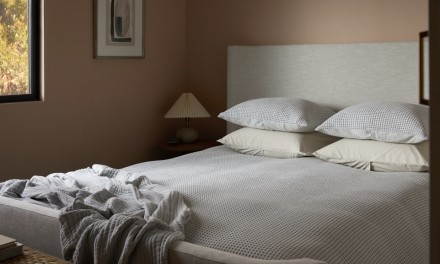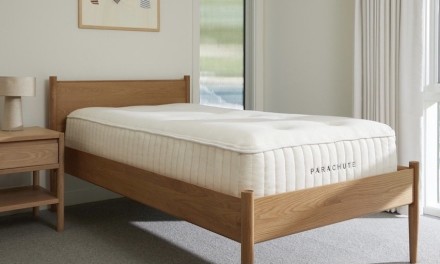Your pillow is one of the most important parts of your bed. Unfortunately, pillows don’t last forever. If you keep your pillow around past its prime, you may experience poor sleep, allergies, neck pain and discomfort.
If you’re struggling with how often to replace your pillows, you’ve come to the right place. We’ll cover the reasons to replace your pillows, how to tell if it’s time to shop for new pillows and how to lengthen your pillow’s lifespan.
How Often Should You Replace Pillows?
Barring damage or soaked-in spills, you should replace your pillows every two to three years. Some pillows can last longer with proper care or if they’re used infrequently. You may want to replace your pillow sooner if you suffer from allergies, for aesthetics or if it’s of a lower quality.
Which Pillows Last the Longest?
A pillow’s lifespan has a lot to do with “washability.” For example, down pillows generally last the longest since you can wash them every six months. Durability is a factor too, and latex and memory foam are some of the more durable materials for pillows. Polyester fill is among the least durable.
Buckwheat-fill pillows are a great investment because you can empty the old buckwheat filling every few years and replace it without needing to start from scratch with a whole new pillow.
When shopping for pillows, it’s important to look beyond the price tag and focus instead on the expected lifespan of your pillow material. A more expensive pillow is worth the investment if it lasts two or three times as long as a less expensive option.
How Often Should You Replace Pillows?
Barring damage or soaked-in spills, you should replace your pillows every two to three years. Some pillows can last longer with proper care or if they’re used infrequently. You may want to replace your pillow sooner if you suffer from allergies, for aesthetics or if it’s of a lower quality.
Which Pillows Last the Longest?
A pillow’s lifespan has a lot to do with “washability.” For example, down pillows generally last the longest since you can wash them every six months. Durability is a factor too, and latex and memory foam are some of the more durable materials for pillows. Polyester fill is among the least durable.
Buckwheat-fill pillows are a great investment because you can empty the old buckwheat filling every few years and replace it without needing to start from scratch with a whole new pillow.
When shopping for pillows, it’s important to look beyond the price tag and focus instead on the expected lifespan of your pillow material. A more expensive pillow is worth the investment if it lasts two or three times as long as a less expensive option.
How to Know When It’s Time to Replace Your Pillows
Pillows don’t have universal expiration dates. Instead, consider how often you use them and the type of use they get. Here are a few clear signs that it’s time to replace your pillows.
Loss of Shape or Lumpiness
Brand new pillows have a defined shape and provide plenty of support, but as the material inside your pillow compacts, it loses shape more easily. If your pillow has lost its definition or seems floppy, then it’s time to start shopping for a new pillow.
Lumps are another issue to pay attention to. Lumpy pillows are a sign the filling has compacted into clumps. Lumpiness comes from incorrect washing and drying and can’t be repaired.
Quick Deflation
Fluffing your pillow right before bed is a great way to freshen it up for sleep. However, if it quickly flattens again after you lay down, it may be time for a new pillow.
One popular test is called the Fold Test. Fold your pillow in half and hold it in the folded position for thirty seconds. Now let go. If the pillow pops back open to its correct position, then it’s still providing ample support for your head and neck. If it stays folded or takes a long time to unfold, it’s time to replace your pillow.
Neck, Shoulder or Head Pain
Everyone wakes up with a sore neck from time to time. But — if it’s happening frequently or the pain persists throughout the day, you should replace your pillow right away.
If you tend to change sleeping positions often, then it’s a good idea to keep one pillow for side sleeping and another for back sleeping. Each position requires a different design and style of support. Sleeping the wrong way on a pillow can cause aches and pains as well.
Skin Irritation or Allergies
Many of us go to great lengths to avoid allergens and germs in our homes, but often the biggest offender is the least obvious: our pillows.
Your skin should never come into direct contact with your pillow. But even if it doesn’t, a buildup of dead skin cells, oils, dust and dust mites inside your pillow can cause skin irritation and allergic responses like sneezing and coughing.
If you notice an increase in allergy symptoms that isn’t remedied by washing your sheets or your pillow, changing pillows is a good idea.
Odors and Stains
Your pillow can often be a bit less inviting than you’d like. Warm nights or open-mouthed sleep can cause dampness that soaks through your pillowcase and gets absorbed into the body of your pillow. If you notice visible stains or apparent odors that aren’t remedied by washing, you should replace your pillow.
Losing Sleep or Sleeping Fitfully
Waking up after a night of interrupted or fitful sleep can have a lasting impact on your mood and health. If your sleep isn’t as high-quality as you’d like, your pillow may be to blame. Without the right support it’s hard to sleep deeply and restfully.
How to Know When It’s Time to Replace Your Pillows
Pillows don’t have universal expiration dates. Instead, consider how often you use them and the type of use they get. Here are a few clear signs that it’s time to replace your pillows.
Loss of Shape or Lumpiness
Brand new pillows have a defined shape and provide plenty of support, but as the material inside your pillow compacts, it loses shape more easily. If your pillow has lost its definition or seems floppy, then it’s time to start shopping for a new pillow.
Lumps are another issue to pay attention to. Lumpy pillows are a sign the filling has compacted into clumps. Lumpiness comes from incorrect washing and drying and can’t be repaired.
Quick Deflation
Fluffing your pillow right before bed is a great way to freshen it up for sleep. However, if it quickly flattens again after you lay down, it may be time for a new pillow.
One popular test is called the Fold Test. Fold your pillow in half and hold it in the folded position for thirty seconds. Now let go. If the pillow pops back open to its correct position, then it’s still providing ample support for your head and neck. If it stays folded or takes a long time to unfold, it’s time to replace your pillow.
Neck, Shoulder or Head Pain
Everyone wakes up with a sore neck from time to time. But — if it’s happening frequently or the pain persists throughout the day, you should replace your pillow right away.
If you tend to change sleeping positions often, then it’s a good idea to keep one pillow for side sleeping and another for back sleeping. Each position requires a different design and style of support. Sleeping the wrong way on a pillow can cause aches and pains as well.
Skin Irritation or Allergies
Many of us go to great lengths to avoid allergens and germs in our homes, but often the biggest offender is the least obvious: our pillows.
Your skin should never come into direct contact with your pillow. But even if it doesn’t, a buildup of dead skin cells, oils, dust and dust mites inside your pillow can cause skin irritation and allergic responses like sneezing and coughing.
If you notice an increase in allergy symptoms that isn’t remedied by washing your sheets or your pillow, changing pillows is a good idea.
Odors and Stains
Your pillow can often be a bit less inviting than you’d like. Warm nights or open-mouthed sleep can cause dampness that soaks through your pillowcase and gets absorbed into the body of your pillow. If you notice visible stains or apparent odors that aren’t remedied by washing, you should replace your pillow.
Losing Sleep or Sleeping Fitfully
Waking up after a night of interrupted or fitful sleep can have a lasting impact on your mood and health. If your sleep isn’t as high-quality as you’d like, your pillow may be to blame. Without the right support it’s hard to sleep deeply and restfully.
Why It’s Important to Replace Your Pillows
Why It’s Important to Replace Your Pillows
Pillows aren’t designed to last forever and they sustain more wear and tear than your other bedding. Try to be proactive and replace your pillows at the first sign of allergies or neck pain. Even better, set up a schedule that preempts those issues by a couple months.
How Often Should You Replace Pillows in Your Home?
Remember to pay attention to the lifespan and functionality of other pillows in your home like bolsters, body pillows and the throw pillows on your couch. Follow the same replacement standards and tests for these as you do for bed pillows.
How to Prolong Your Pillow’s Lifespan
How to Prolong Your Pillow’s Lifespan
Replacing a house full of pillows every couple years can be expensive. Fortunately, there are a few key ways to make your pillows last as long as possible.
Maintain a Regular Cleaning Schedule
Machine wash or spot clean your pillows at least every six months. Keeping pillows clean by washing them helps keep the fill in good condition, removes allergens and zaps stains before they have a chance to set.
Washing and refreshing your pillows periodically is one of the most important steps for helping them last longer.
If you’re not sure how to wash pillows or dry them correctly, see our guide: Can You Wash Pillows?
Use Pillow Protectors
Pillow protectors provide an extra layer of insulation between your pillow and your pillowcase. They’re easier to wash and dry than pillows and can stop stains and allergens from reaching the pillow itself.
Fluff Them Up
Try to fluff pillows each morning to help restore their shape and loosen up any compacted fill. Getting into the habit of daily fluffing keeps your pillows in better condition for improved comfort and sleep.
Deodorize Your Pillows
Regularly deodorizing your pillows is a simple way to keep them fresher longer. Try putting your pillows out in the sunlight for a few hours each time you wash your sheets or change your pillowcase. You can also sprinkle them with baking soda to pull out lingering odors. Let the baking soda sit on your pillows for a couple of hours and then vacuum it completely.
Invest in Restful Sleep With Pillows from Parachute
No matter what style of sleeper you are or what shape of pillow you prefer, investing in high quality, eco-friendly pillows from Parachute provides plenty of benefits. With both down and down alternative options for side sleepers, back sleepers and more, it's simple to find the perfect, easy-to-care-for pillow for your bed in soft, medium or firm.
If you’re ready to buy new pillows but you’re not sure which pillow is right for you, check out our Pillow Guide: How to Choose the Right Pillow.
Invest in Restful Sleep With Pillows from Parachute
No matter what style of sleeper you are or what shape of pillow you prefer, investing in high quality, eco-friendly pillows from Parachute provides plenty of benefits. With both down and down alternative options for side sleepers, back sleepers and more, it's simple to find the perfect, easy-to-care-for pillow for your bed in soft, medium or firm.
If you’re ready to buy new pillows but you’re not sure which pillow is right for you, check out our Pillow Guide: How to Choose the Right Pillow.







